The History of Flooring:
From Ancient Foundations to Modern Innovation
Flooring reflects the evolution of human civilization, balancing form, function, and style. This timeline highlights key milestones in flooring history, showcasing the journey from natural stone to high-tech, sustainable options.
Ancient Civilizations: Stone and Clay (10,000 BCE – 500 CE)
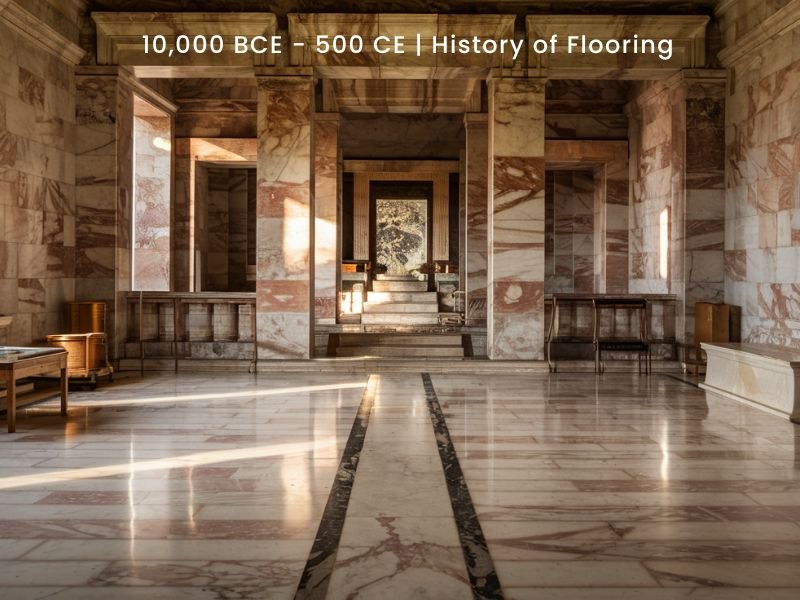
Stone floors, crafted from granite and marble, graced ancient temples in Egypt and Greece. Clay tiles offered a practical and decorative choice in early Mesopotamian homes.
The Middle Ages: Wood and Practicality (500 – 1500 CE)
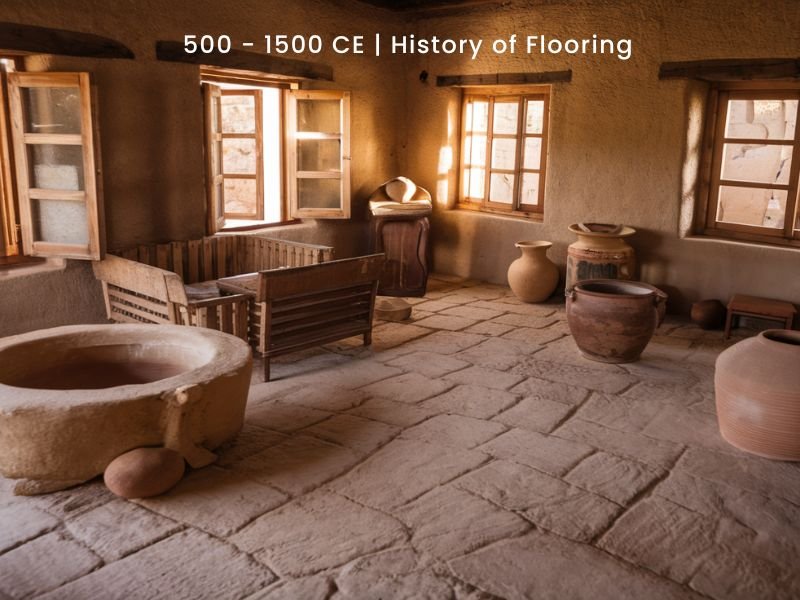
Wood floors gained prominence, with rustic planks used in castles and cottages alike. Wealthy Europeans introduced ornate patterns to enhance grandeur.
The Renaissance: Artistic Innovation (1500 – 1700 CE)
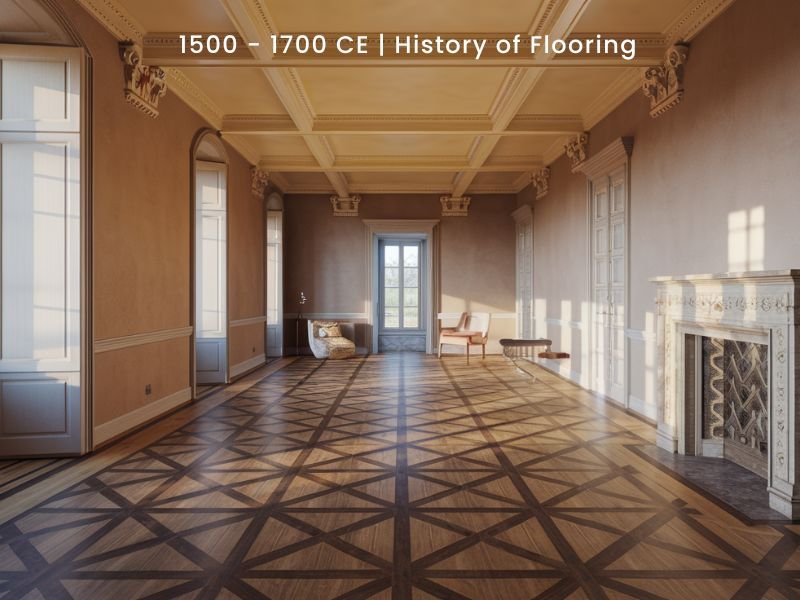
Parquet floors emerged, featuring intricate designs made from fine hardwoods like oak and walnut, symbolizing elegance and craftsmanship.
The Industrial Revolution: Mass-Produced Materials (1700 – 1900 CE)

With advancements in manufacturing, flooring became more accessible. Linoleum, rubber, and mass-produced carpets made their debut, expanding options for homeowners.
The 20th Century: New Trends Emerge (1900 – 2000)
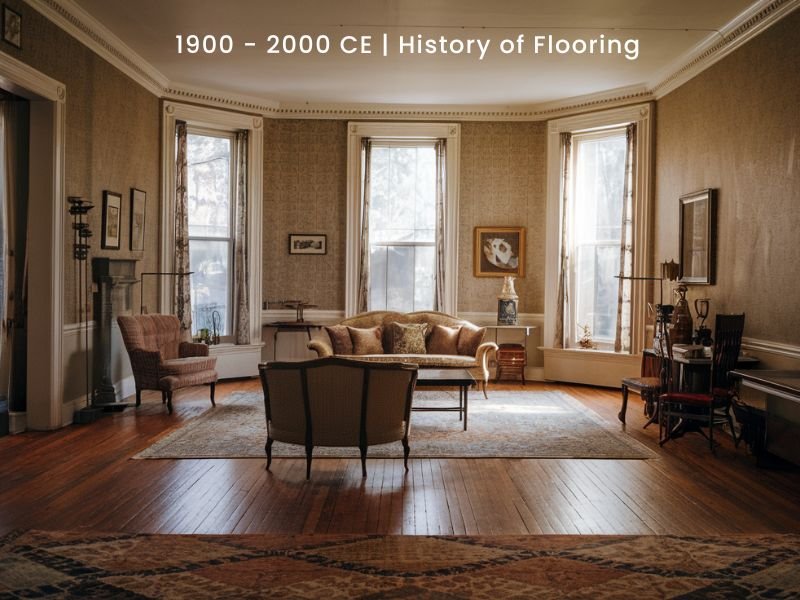
Hardwood, laminate, and vinyl flooring rose in popularity. Innovations like easy-to-install planks and modern finishes transformed flooring installation and maintenance.
The 21st Century: Sustainability and Style (2000 – Present)
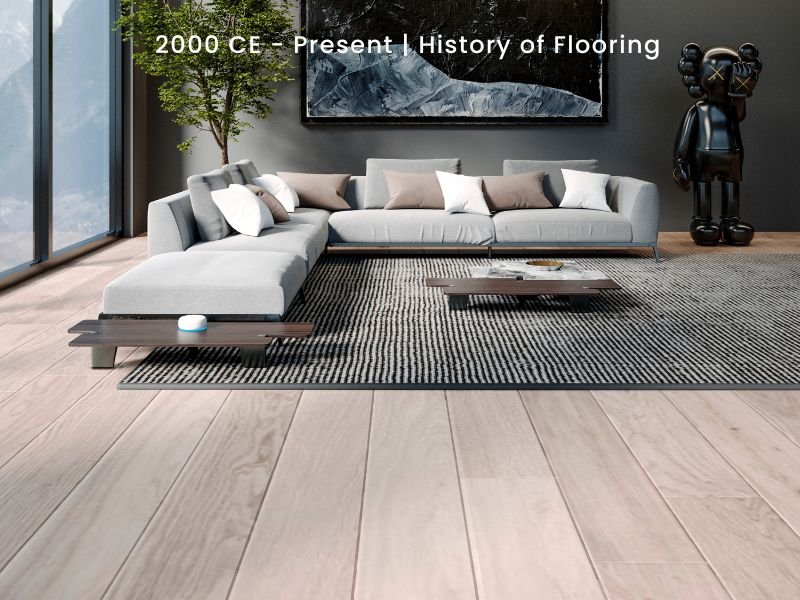
Modern flooring embraces eco-friendly materials like bamboo and cork. Luxury vinyl tile (LVT) and engineered wood combine durability with design, catering to diverse tastes.
Discover Timeless Flooring Solutions
At Shunnarah Flooring, we honor this rich legacy by offering a curated selection of flooring inspired by history and tailored to modern lifestyles.
Explore our collection and find the perfect fit for your home today.
